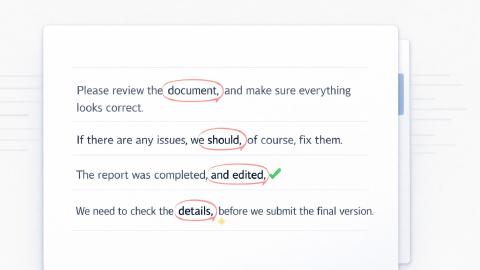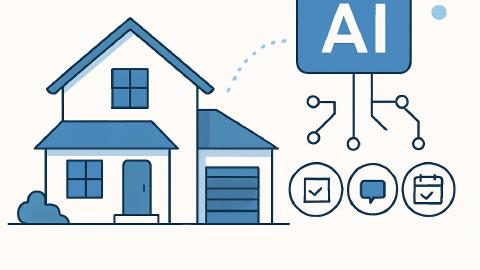Using AI to Reduce Documentation Burden in Healthcare in 2025
Learn how AI tools can help providers reclaim time with patients in 2025.
Ever feel like you're spending more time typing up charts than talking to patients? You are not alone. In today's healthcare landscape, clinicians face a significant and growing challenge: documentation burden. This burden threatens both the quality of care and the well-being of providers.
Around the world, healthcare providers are dedicating an increasing amount of time to detailed care documentation, navigating what often feels like a never-ending stream of paperwork. Everything from electronic medical record (EMR) navigation to compliance checklists contributes to this administrative load.
The result? Providers are strained, patient face-to-face time is reduced, and burnout is on the rise. Documentation burden is more than just a workflow issue; it's a healthcare crisis that demands our attention.
According to the American Medical Informatics Association, nearly 75% of healthcare professionals feel documentation time impedes patient care, with over 77% working beyond desired hours.
Fortunately, a solution is emerging. Artificial intelligence (AI) tools designed to assist care providers with the documentation process are rapidly improving and becoming more user-friendly. Clinicians are already leveraging these tools to reduce repetitive work, streamline documentation, and refocus their efforts on what truly matters—providing quality patient care.
What Is Documentation Burden and Why Does It Matter?
Documentation burden refers to the load placed on health professionals as they complete required healthcare documentation. When this documentation takes up so much of a provider's time that it impacts patient care, it becomes a problem we need to address.
Research shows the consequences of this burden are significant:
- Burnout costs $4.6B annually in lost productivity from physicians
- Linked to increased medical errors and reduced patient safety
- Contributes to information overload and lower provider satisfaction
It's important to note that this isn't solely a physician problem. Nurses, therapists, medical assistants, and interdisciplinary care teams all feel the weight of documentation burden.
Why Has Documentation Become So Excessive?
The American Nursing Informatics Association Framework outlines several factors that contribute to documentation burden:
- Regulatory complexity
- Interoperability challenges
- Poor EMR usability
- Self-imposed burdens (e.g., documentation habits, local policies)
A key issue is the sheer volume and complexity of documentation that clinicians face. The need to comply with numerous rules and regulations means clinicians must navigate an ever-expanding list of documentation fields, which takes time away from patient care.
How AI Can Help: Market Trends and Emerging Tools
AI is rapidly becoming a powerful ally in the fight against documentation burden.
In recent years, we've seen a surge in investment and adoption of healthcare AI tools, particularly in the area of clinical documentation.
Ambient scribing systems, browser-based AI assistants, and AI-powered note generators are increasingly common. What was once considered experimental is now becoming operational.
Here are some key categories of AI-driven solutions gaining traction in the market:
Current Uses:
AI Scribes: Automatically generate structured clinical notes from patient-clinician conversations through ambient listening.
Summarization Tools: Quickly provide concise overviews of medical information like patient history and charts.
Notes Rewriting and Compliance Tools: Rewrite and standardizes notes into a concise format (e.g., SOAP, APSO, narrative notes) while identifying documentation compliance gaps.
Virtual Assistants: Handle administrative tasks like scheduling and patient inquiries.
Clinical Coding and Billing Tools: Assign accurate medical codes for billing.
Future Capabilities:
AI Agents: Automate multi-step tasks across clinical workflows with context-aware AI
Automation of Administrative Tasks: Automate tasks like order entry and follow-up processes with AI.
Predictive Care: Analyzing a patient's current and historical data to predict what care, medications, or diagnoses a patient might need in the future.
These tools are already demonstrating their value in a variety of care settings. The future of healthcare documentation involves intelligent, assistive agents that integrate seamlessly into clinicians' workflows, freeing up time to spend with patients.
Example: AI Blaze as a Medical Copilot
While some AI solutions require EMR integrations, others are designed to be accessible across various systems.
AI Blaze is a browser-based AI Copilot that focuses on low-friction, high-impact support. It works within any EMR and requires no integration.
AI Blaze can help care teams in the following ways:
Automate repetitive charting with dynamic templates and prompts.
Polish rough notes for clarity, compliance, and accuracy.
Record and summarize transcripts into clean, structured notes.
Write and refine responses to patient messsages
Summarize patient history, charts, or anything else in seconds
By offering streamlined solutions, tools like AI Blaze can help to bridge the gap between AI and patient care by reducing documentation burden.
Reclaiming What Matters: Time With Patients
One of the worst impacts of documentation burden is the reduction in face-to-face time with patients. Research indicates that for every hour of patient care, providers may spend up to two hours on documentation tasks.
Ultimately, the most valuable resource in healthcare is clinician time, and AI is a tool that can help protect and restore that time.
The Way Forward
Documentation burden presents a significant challenge in healthcare, negatively impacting both provider well-being and patient care. AI offers a powerful solution to this problem.
By strategically implementing AI tools to alleviate administrative tasks, healthcare organizations can empower clinicians to provide more focused, high-quality care This leads to improved provider satisfaction, reduced burnout, and ultimately, better outcomes for patients.




